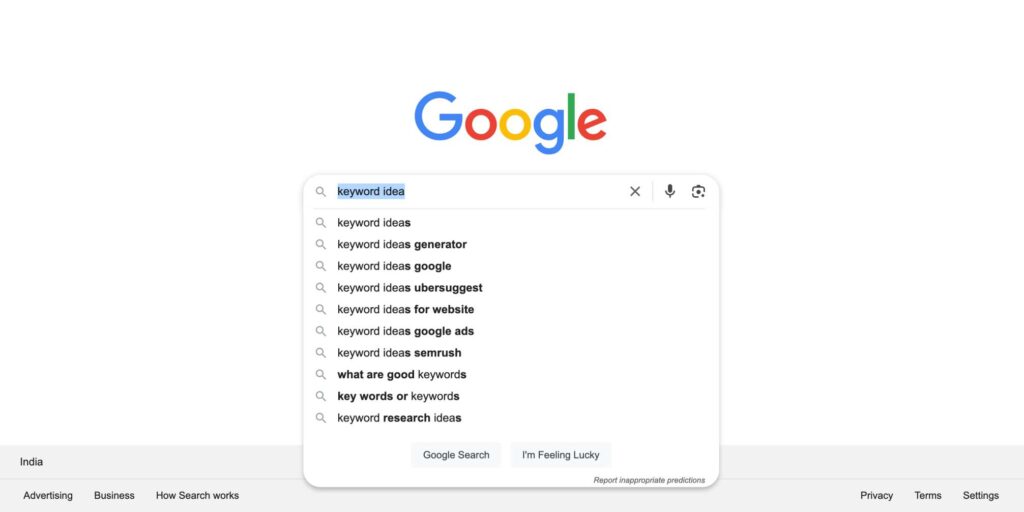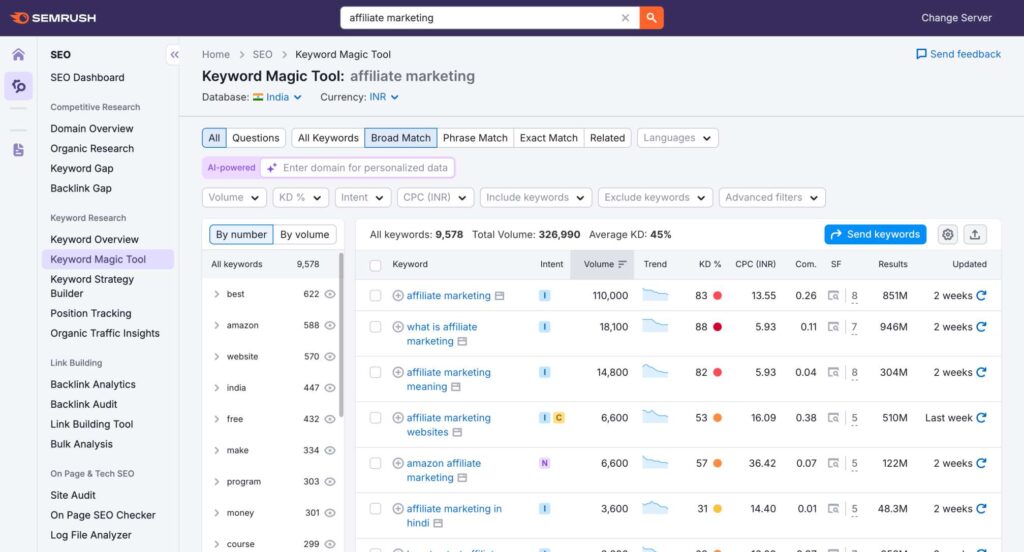If you’re into blogging, you already know that a blog post doesn’t begin with writing; it begins much earlier with research. And the most crucial part of that research is keyword research.
From writing an article to ranking it and bringing in traffic, everything depends heavily on whether you’ve done proper keyword research. The nature of the keyword matters—whether it’s long-tail or short-tail, what its search volume and CPC (Cost Per Click) are, and more.
You may have written a beautiful blog post or created a video, but no one sees it. Where did it go wrong? The issue is poor keyword research. In simple words, you don’t know what your audience is truly searching for.
Don’t worry. In today’s post, I’ll walk you through how to do keyword research step-by-step using free tools.
Make sure to read this blog till the end, as I’ll also be making a special announcement that can help you connect directly with me for learning blogging, SEO, and affiliate marketing.
How To Do Keyword Research For Free
We can do keyword research in many ways. Sometimes using paid keyword research tools, and in some cases using limited free tools.
In my 6-year blogging journey, I’ve used many types of keyword research tools, and honestly, I haven’t noticed much difference between them. In today’s post, I’ll talk about how you can do keyword research using free tools and still rank your blog successfully.
Step 1: Choose a Content Idea
Let’s say you want to write a new article titled How to write a LinkedIn post.
Then your seed keyword will be “how to write a LinkedIn post”.
Step 2: Use Google Suggestions
Since we’re focusing on free keyword research methods, Google itself is our first tool. Start typing your keyword on Google and observe the autocomplete suggestions.
For example, when you type “LinkedIn,” Google will suggest long-tail keywords like:
- How to make a LinkedIn post viral
- LinkedIn growth strategy
These phrases are highly valuable as supporting or secondary keywords in your blog.

Step 3: Use Free Tools
Here are some powerful free tools you can use:
- 🔹 Ubersuggest – https://ubersuggest.com
- 🔹 AnswerThePublic – Reveals what users are asking
- 🔹 AlsoAsked.com – Shows related questions
While these tools are free, they come with daily usage limits. Still, they offer great insight.
You can also use:
- Google Keyword Planner (free by Google)
- Google Trends – for trending topics
- Twitter trends – to find real-time demand
With Ubersuggest or Keyword Planner, you can check:
- Long-tail keyword ideas
- Search volume
- CPC
- Keyword difficulty
These help you decide which keywords to target.
Step 4: Understand Keyword Metrics
For every keyword you choose, consider the following metrics:
- Search Volume – How many people are searching for it?
- SEO Difficulty – Is the keyword highly competitive or not?
Pro Tip for Beginners: Go for low competition and medium search volume keywords. They’re easier to rank for.

Step 5: Pick Long-Tail Keywords
Let’s take our keyword example again:
- “How to write a LinkedIn post” is a broad keyword
But something like:
- “How to write a LinkedIn post that goes viral in India 2025”
It is a long-tail keyword.
It may have lower search volume but less competition, making it easier to rank and generate targeted traffic. This is exactly what beginners should aim for.

Final Thoughts: Keyword Research in 2025
Keyword research in 2025 isn’t just about tools. It’s about understanding what people want—and creating content that solves that need. You don’t need paid tools right away. As I’ve shown, free methods work very well.
Once you start earning from your blog, you can consider premium tools like SEMRush or Ahrefs to level up.
Bonus: A Surprise Announcement
If you liked this post and want more content on SEO, blogging, and affiliate marketing, feel free to comment and stay connected with my channel.
I’ve recently started a Telegram channel where I’ll personally help those interested in learning blogging, SEO strategy, and affiliate marketing. Many of you have wanted to talk directly with me—this is your chance!
Join the Telegram group and let’s grow together. That’s it for today. I’ll see you in the next blog or video with a brand new topic. Stay well, take care of your parents, and thank you so much for reading. Jai Maa Durga!
